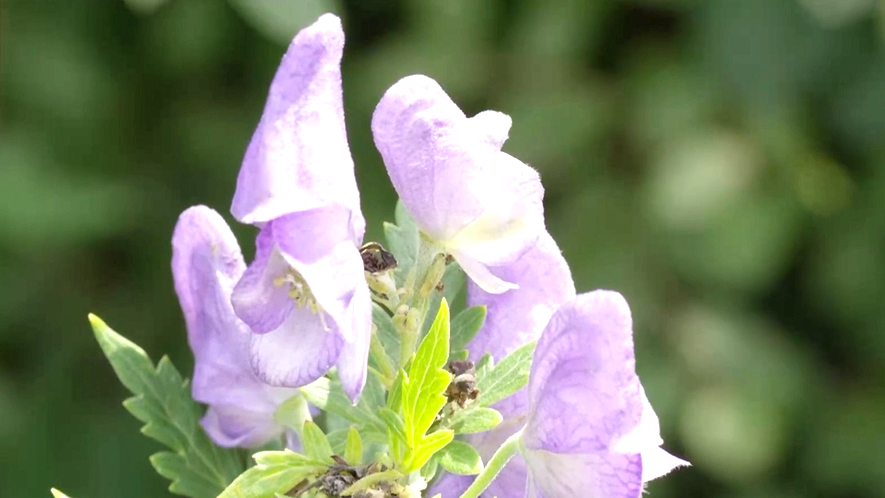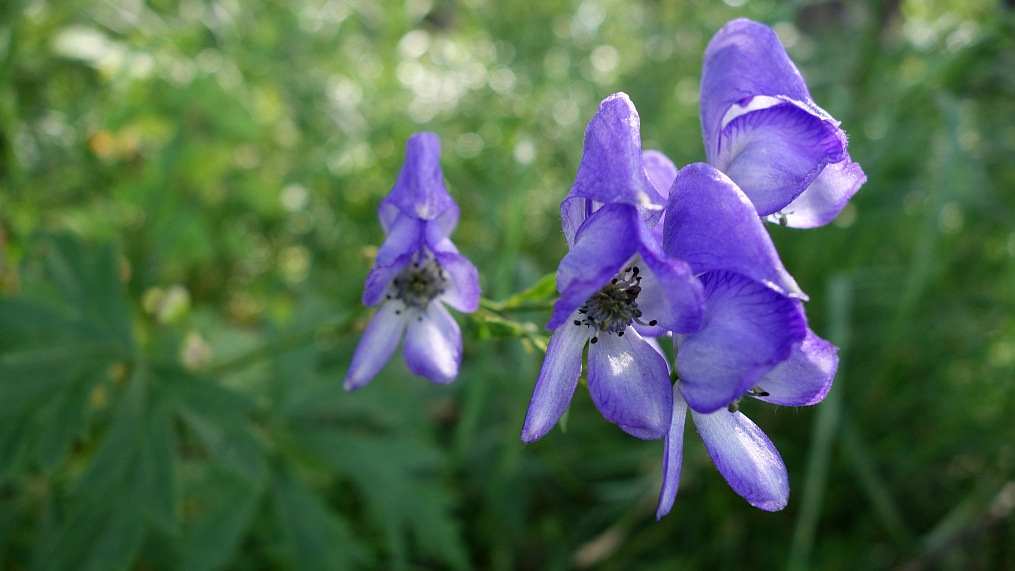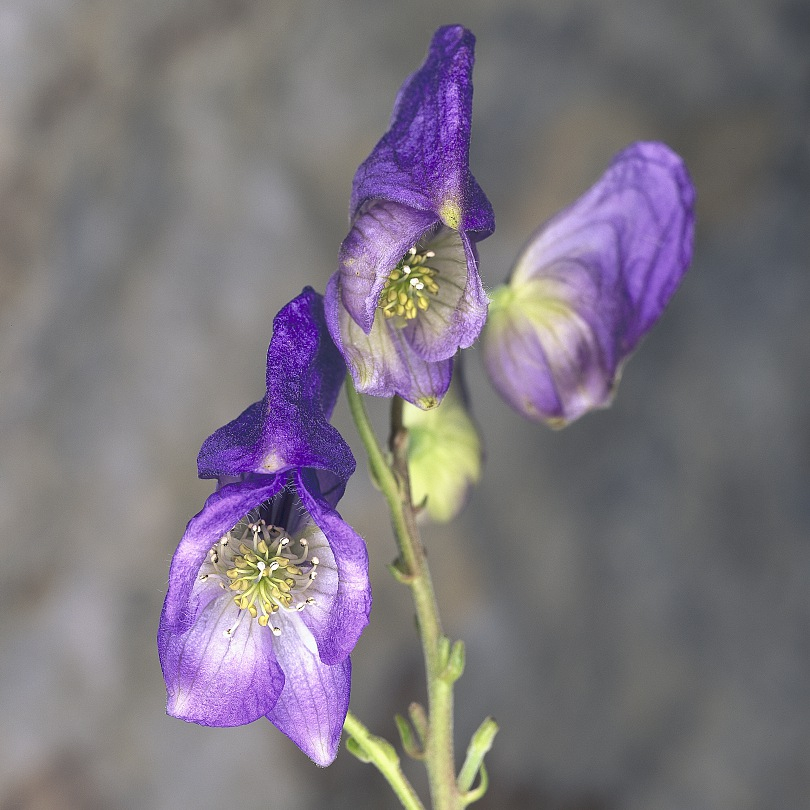00:31

Usually blue or purple, the monkshood is one of the deadliest plants in the world. It is native to the mountainous regions of the Northern Hemisphere and is believed to have originated in Siberia. Shanxi monkshood is one of more than 250 species of monkshood and is also referred to as Smith monkshood after the scientist who named it.

Monkshood flowers. /VCG Photo
Monkshood flowers. /VCG Photo
Monkshood goes by many names, and some of them, such as wolfsbane and devil's helmet, are literal presentations of its deadly nature. The poisonous parts are the roots and tubers of monkshood. In ancient times, hunters often crushed the plant and used its poisonous juice on arrows to kill beasts in the wild. It also has a long tradition as a poison and was used in water by ancient warriors to kill their enemies.

A close-up of the monkshood plant. /VCG Photo
A close-up of the monkshood plant. /VCG Photo
Although it has poisonous roots and tubers, the nectar and leaves are among many moths' favorite food. In many ancient cultures, such as Chinese, Greek, and Roman cultures, processed monkshood is also used as a medicine.

Monkshood flowers grow in clusters. /VCG Photo
Monkshood flowers grow in clusters. /VCG Photo
However, there have been many cases in which careless handling or taking more than the prescribed dosage of monkshood has led to death. Due to the poisonous nature of monkshood, the Chinese government has prohibited private sale or production of all monkshood products.
China's Flora Tour
From the wetlands along the coast to the dense rainforests hidden in the southwest of China, all boast an array of plant species. In this series, CGTN will go on a tour to learn about some of the most iconic flora in different provinces and see how they live in harmony with the local climate and topography.
(Cover photo via VCG, designed by CGTN's Qu Bo.)
(If you want to contribute and have specific expertise, please contact us at nature@cgtn.com)